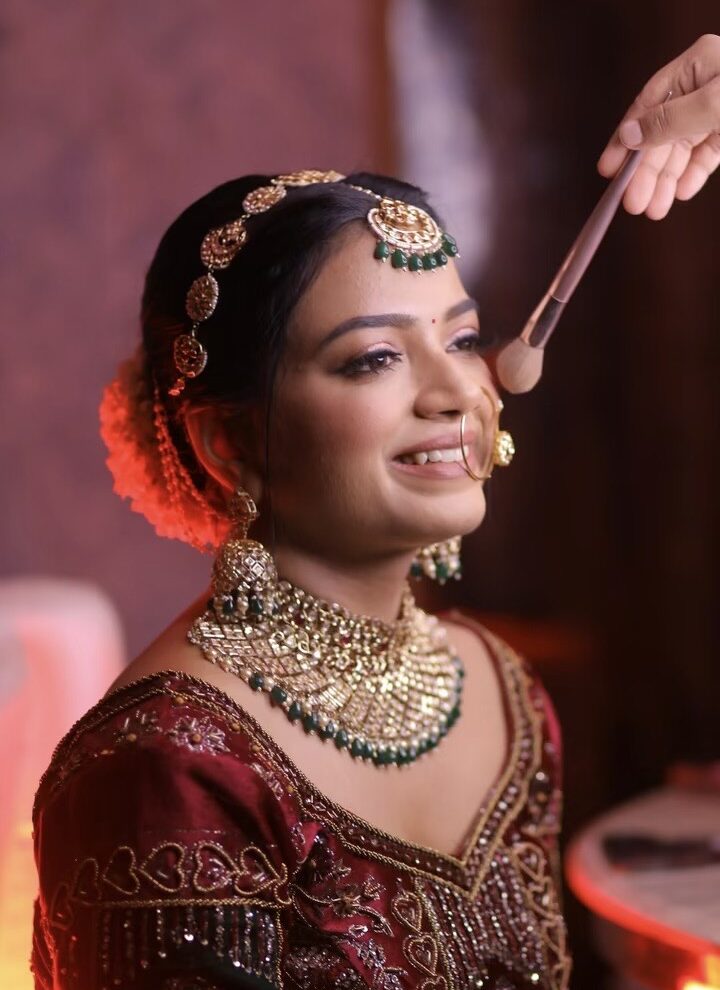India is a land of spirituality and devotion, dotted with temples that embody centuries of faith and tradition. Among these sacred sites, the Shaktipeeth Shri Brijeshwari Devi Temple, also known as the Kangra Devi Temple, holds a place of immense reverence for devotees of Goddess Shakti.
Located in the picturesque Kangra Valley of Himachal Pradesh, the temple is one of the 51 Shaktipeeths, where parts of Goddess Sati’s body are believed to have fallen. Pilgrims and tourists alike flock here to seek blessings and experience its powerful aura.
This comprehensive article explores the temple’s history, mythology, significance, architecture, rituals, and travel tips — everything you need to know about visiting Shri Brijeshwari Devi Temple.
Table of Contents
Mythological Significance of the Temple
The story of the Brijeshwari Devi Temple is deeply rooted in Hindu mythology and the Shaktipeeths — sacred sites dedicated to Goddess Sati.
The Legend of Shaktipeeths
According to Hindu scriptures, Sati (an incarnation of Goddess Parvati) married Lord Shiva against her father Daksha’s wishes. When Daksha insulted Shiva during a grand yajna, Sati could not bear the humiliation and immolated herself. Enraged and grief-stricken, Shiva carried Sati’s body and wandered in sorrow.
To restore cosmic balance, Lord Vishnu used his Sudarshan Chakra to dismember Sati’s body. The places where her body parts fell became sacred Shaktipeeths, each symbolizing a divine energy center.
At Shri Brijeshwari Devi Temple, it is believed that Sati’s breasts fell here, symbolizing nurturing and sustenance. Hence, the Goddess is worshipped here as the bestower of nourishment and fertility.
History of Shri Brijeshwari Devi Temple
Ancient Origins
The temple’s history stretches back thousands of years. It is mentioned in the Mahabharata, where the Pandavas are said to have visited this shrine and performed special rituals to seek blessings during their exile.
Medieval Period
Over centuries, the temple gained prominence and was richly adorned with gold and silver by various kings and devotees. At one time, the temple was so wealthy that its dome was covered in gold.
Destruction and Rebuilding
In 1905, a devastating earthquake struck Kangra Valley, destroying much of the temple. The resilient local community rebuilt it, preserving its spiritual essence and architectural splendor.
Today, the temple stands as a testament to faith, resilience, and devotion, drawing millions of visitors every year.
Architectural Marvel
The Brijeshwari Devi Temple is an exquisite example of traditional North Indian temple architecture, combining elegance and grandeur.
Features:
A grand entrance with intricate carvings
Ornate domes and shikhara (spire) rising above the sanctum
Walls adorned with mythological paintings and motifs
The sanctum sanctorum houses the sacred idol of Goddess Brijeshwari, beautifully decorated with flowers, silk, and ornaments
A courtyard where devotees light diyas and offer prayers
Rituals and Festivals
The temple is alive with vibrant rituals and festivals throughout the year. Some notable ones include:
Daily Rituals:
Mangala Aarti: Early morning prayers and rituals
Bhog Offering: Food offerings to the Goddess
Evening Aarti: Beautifully conducted with lamps and chants
Major Festivals:
Navratri
Navratri (twice a year) is the most important festival here. The temple is magnificently decorated, and thousands of devotees undertake a pilgrimage to seek blessings during this auspicious time.
Makar Sankranti
Another significant celebration when devotees apply butter to the Goddess’s idol, symbolizing healing of her wounds from the time of the Mahabharata.
Spiritual Significance
Worshipping at the Shri Brijeshwari Devi Temple is believed to:
Bestow fertility and good health
Bring prosperity and happiness
Remove obstacles and fears
Fulfill heartfelt wishes
Many couples visit the temple to pray for children, while others come seeking relief from ailments and difficulties.
How to Reach Shri Brijeshwari Devi Temple
The temple is located in Kangra town, about 20 km from Dharamshala, Himachal Pradesh.
By Air:
The nearest airport is Kangra Airport (Gaggal), around 14 km from the temple. Regular flights operate from Delhi and Chandigarh.
By Train:
The nearest railway station is Kangra Mandir Railway Station on the Pathankot–Joginder Nagar narrow gauge line.
By Road:
Kangra is well-connected by road to cities like Delhi, Chandigarh, Amritsar, and Dharamshala. Regular buses and taxis are available.
Temple Timings
| Day | Morning | Evening |
|---|---|---|
| Everyday | 5:30 AM – 12:30 PM | 3:00 PM – 10:00 PM |
(Note: Timings may change during festivals. It’s advisable to check locally before visiting.)
Nearby Attractions and Things to Do
Apart from visiting the temple, you can explore several attractions around Kangra:
1. Kangra Fort
One of the oldest forts in India, offering panoramic views of the valley.
2. Masroor Rock Cut Temple
A group of 15 monolithic rock-cut temples resembling the Ellora caves.
3. Dharamshala and McLeodganj
Experience Tibetan culture, visit monasteries, and enjoy the serene surroundings.
4. Baijnath TempleAn ancient Shiva temple located about 50 km from Kangra.
Where to Stay
Kangra offers a range of accommodations — from budget guesthouses to mid-range hotels. Dharamshala and McLeodganj, a short drive away, have more options, including luxury resorts and homestays.
Tips for Visitors
- Wear modest clothing as a mark of respect.
- Remove shoes before entering the temple premises.
- Carry some cash, as digital payments may not be widely accepted.
- Avoid visiting during peak midday heat in summer.
- Respect local customs and maintain silence inside the sanctum.
Best Time to Visit
The temple is open throughout the year, but the most pleasant time to visit is during October to March, when the weather is cool and comfortable. Visiting during Navratri offers a chance to experience the temple at its most festive.
Spiritual Testimonials
Many devotees share stories of miraculous healings, answered prayers, and profound peace experienced at Shri Brijeshwari Devi Temple. The powerful energy of the Shaktipeeth is said to cleanse negative influences and fill the devotee with positivity.
Shaktipeeths and Their Significance
Shri Brijeshwari Devi Temple is one of the 51 Shaktipeeths scattered across the Indian subcontinent. Each of these sites represents a body part or ornament of Goddess Sati, symbolizing different aspects of the Divine Feminine.
Visiting these Shaktipeeths is believed to help devotees overcome karmic obstacles and achieve spiritual growth.
FAQs about Shri Brijeshwari Devi Temple
Q1: Why is Shri Brijeshwari Devi Temple considered a Shaktipeeth?
It is believed to be the spot where Goddess Sati’s breasts fell when Lord Vishnu cut her body, making it one of the sacred 51 Shaktipeeths.
Q2: What is the best time to visit the temple?
The best time is from October to March, with special significance during Navratri and Makar Sankranti.
Q3: How can I reach the temple from Delhi?
You can take a flight to Kangra Airport, a train to Pathankot/Kangra, or drive via NH44 and NH503. The distance is around 460 km from Delhi.
Q4: Are there facilities for prasad and puja?
Yes, prasad counters, donation boxes, and priests for special pujas are available within the temple premises.
Q5: Can non-Hindus visit the temple?
Yes, people of all faiths are welcome to visit respectfully.
Q6: Is photography allowed inside the temple?
Photography is allowed in the outer areas, but it may be restricted inside the sanctum. Always ask or check posted signs.
Q7: Are there accommodation facilities nearby?
Yes, there are hotels, lodges, and dharamshalas in Kangra, as well as in Dharamshala and McLeodganj.
Conclusion
The Shaktipeeth Shri Brijeshwari Devi Temple is more than just a temple — it’s a place of faith, energy, and timeless devotion. Whether you come seeking blessings, healing, or simply to witness its spiritual aura, the experience will stay with you forever.
Plan your visit to this sacred Shaktipeeth and immerse yourself in the divine presence of Goddess Brijeshwari — the nurturing mother who blesses all her children.
Have you visited the Shri Brijeshwari Devi Temple? Share your experience or questions in the comments below!











